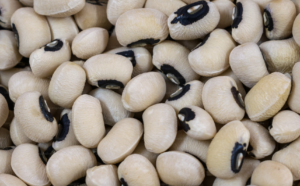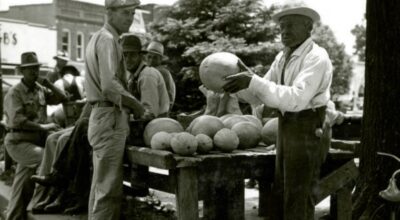Southern traditions: Mississippians ring in New Year with luck on the menu
Published 4:22 pm Sunday, December 31, 2023

- Pork and cornbread are common New Year additions to a meal for Southerners. (Logan Jeffrey/Unsplash)
In the heart of the South, Mississippians are welcoming the New Year with a spread of traditional foods believed to bring luck and prosperity in the coming months. As the clock strikes midnight, families across the state gather around tables laden with dishes that have been passed down through generations, each morsel carrying the promise of good fortune.
For many in Mississippi, the star of the New Year’s feast is a steaming bowl of Hoppin’ John, a dish made with black-eyed peas, rice and smoked pork. Each pea symbolically represents a coin, and the more you eat, the wealthier you’ll be in the new year. The dish is often accompanied by collard greens, symbolizing greenbacks, and cornbread for gold. Some families also add a dash of spice with a side of chow-chow, a relish made from pickled vegetables.
Traditionally, pork products were more plentiful in the winter as pigs were traditionally slaughtered in the cold autumn and winter months. There were ample cuts of pork available throughout the winter holidays. Across the rural South, many saved the hog’s head to cook on New Year’s for luck. The whole hog’s head is boiled until it falls off the bone. The dish is served with black-eyed peas and greens, either collard, turnip or mustard greens.
As the New Year unfolds, other parts of the country have their own unique culinary traditions to usher in good luck. In the Midwest, particularly in Ohio, pork takes center stage on New Year’s Day. Many believe that the pig’s forward rooting motion represents progress, making it a symbol of moving forward into the new year. Families indulge in pork roast, sausages, or a hearty serving of pork and sauerkraut.

Jambalaya is a popular dish in Louisiana – and other states – to ring in the new year or just to feed a crowd. The filling dish typically incorporates rice, sausage or chicken, and the Cajun Trinity – onions, green bell peppers and celery – though there are hundreds of different varieties of jambalaya around the world. (Nisha Ramesh/Unsplash)
In New York state, people with a Scandinavian heritage favor pickled herring for luck. It represents wealth for the coming year, as fish are plentiful and the pickling adds sweetness for a sweet New Year.
On the East Coast, the Pennsylvania Dutch have a tradition of eating pork and sauerkraut, much like their Midwestern counterparts.
Louisiana residents spice up their New Year’s Day with a touch of Creole flavor. Jambalaya, a one-pot dish bursting with rice, sausage, and an array of seasonings, is a staple on many tables. Seafood gumbo is also popular for New Year’s Day in Cajun country. It is stocked with shrimp, andouille sausage, fish, and okra. A pot of gumbo can be made to feed a large gathering, making it ideal for a New Year’s celebration.
In the Southwest, Texans savor tamales on New Year’s Day, a tradition that dates back to Mexican-American culture. Tamales, often filled with a mixture of meats and spices, are said to bring good luck when shared among family and friends.
Across the nation, diverse communities celebrate the arrival of the new year with culinary rituals steeped in cultural significance. Whether it’s the warmth of Hoppin’ John in Mississippi or the spice of jambalaya in Louisiana, these New Year’s dishes not only tantalize taste buds but also serve as a flavorful way to welcome a year filled with hope and prosperity.






